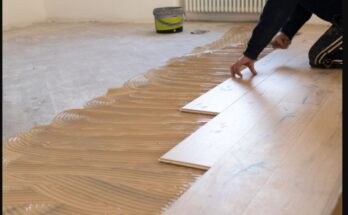Property owners choose artificial grass because it’s low maintenance and looks great regardless of the season. Eco-friendliness is another major benefit of synthetic turf, as it helps conserve resources like water and prevents pollution from pesticides and fertilizers. Environmentally-conscious individuals can switch to artificial turf to play their part in reducing carbon footprints and protecting the environment. Here are six eco-friendly ways synthetic turf helps the environment:
Conserving Water
Natural grass requires significant amounts of water to grow and stay green and healthy. During hot seasons, you may need to keep your sprinkler system operating for longer to prevent the grass from drying out. If you live in an area that experiences drought often, watering the grass for many hours daily strains the municipal water supply. Artificial turf is a non-living product that doesn’t need watering to maintain its appearance. It doesn’t contribute to depleting local water supplies, conserving natural resources. It only requires occasional cleaning to remove dust and debris, and this process doesn’t consume much water. In addition to helping the environment, synthetic grass also helps you save money on water bills.
Eliminating Fertilizer Use
You must fertilize natural grass occasionally to keep it healthy and encourage growth after a dormant period. Fertilizer has key nutrients like calcium, phosphorus, and potassium that plants need for nourishment, but it may also include harmful properties like nitrogen and ammonia. While these products help plants grow suitably, they pollute the environment. Irrigation and rainwater carry the chemicals from fertilizers into natural water resources, where they negatively affect wildlife and municipalities. These chemicals also seep into the soil and may cause it to degrade over time. Artificial turf doesn’t require fertilizers or other chemicals because it doesn’t grow. Installing turf minimizes fertilizer use, contributing to a healthier environment with fewer pollutants.
Eliminating Pesticide and Herbicide Use
Various pests feed on natural grass, and if yours is green and healthy, you may experience infestations on your property. This may encourage you to use pesticides to remove the insects and animals. Pesticides are harmful chemicals that may bring negative health effects to you and your family. Children and pets that play on the lawn are more susceptible to the harmful impact of pesticides. Artificial grass is made with synthetic materials that animals and insects can’t consume, making it pest-resistant. These destructive organisms cannot live where there’s no food, keeping your lawn pest-free. The weed barriers placed below the turf during installation make synthetic grass weed-free. This helps you avoid herbicides to get rid of unwanted plants.
Reducing Carbon Emissions
In addition to watering and fertilizing, natural grass requires regular mowing and trimming to maintain a suitable height and appearance. The machines used for this work, including lawnmowers, produce carbon emissions that go into the atmosphere. If you have a large property, the emissions can be significant and contribute to air pollution over time. Artificial turf stays the same height after installation and doesn’t require trimming, edging, or mowing. This means you won’t need gas-powered machinery to maintain your lawn. It also means your property will produce fewer carbon emissions that could pollute the air.
Minimizing Noise Pollution
Lawn maintenance tools not only release harmful gasses, but they also produce noise. If you live in an area close to wildlife, the noise can scare animals and make their habitats stressful to live in. Animals use various sound signs for navigation, mating, hunting, and warning others of danger. Sounds from your lawn care machines can make them miss these signals and create a potentially dangerous environment. Synthetic grass doesn’t need trimming or mowing, eliminating the need to use tools that produce excess noise.
Get Artificial Turf for Residential or Commercial Properties
Installing artificial turf is an eco-conscious decision because the material saves water, eliminates fertilizers and pesticides, and reduces carbon emissions. If you’re passionate about environmental conservation and going green, switching to artificial turf can be a significant step towards protecting the earth. Contact a turf supplier today to learn more about creating a low-maintenance, eco-friendly lawn. Residential or Commercial Properties
Installing artificial turf is an eco-conscious decision because the material saves water, eliminates fertilizers and pesticides, and reduces carbon emissions. If you’re passionate about environmental conservation and going green, switching to artificial turf can be a significant step towards protecting the earth. Contact a turf supplier today to learn more about creating a low-maintenance, eco-friendly lawn.




